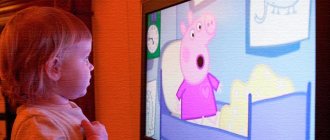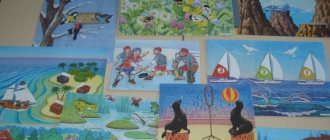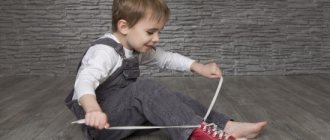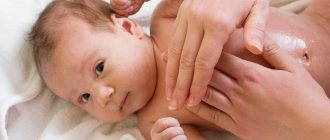Recommendations from a speech therapist to educators and parents of children with speech disorders
Children who come to speech therapy groups rarely have confident coordination of finger movements. As a rule, they experience motor clumsiness, imprecision of movements, difficulties in mastering the motor program and switching, and synkinesis (cooperative movements of other parts of the body).
And this is natural. Back in the middle of the last century, it was found that the level of development of children’s speech directly depends on the formation of fine movements of the fingers.
If the development of movements corresponds to age, then speech development is within normal limits.
If the development of finger movements lags behind, then speech development is also delayed, although general motor skills may be higher than normal.
MM. Koltsova proved that finger movements stimulate the development of the central nervous system and accelerate the development of a child’s speech. Thus, constant stimulation of the areas of the cerebral cortex responsible for fine motor skills is a necessary element in the system of speech therapy. And not as a separate element, but as a kind of structure in the correction system.
Games and aids for speech therapy groups and offices
The first thing a child encounters when entering a group is a subject-development environment.
In the speech group, there should be many freely available games, aids, and toys for the development of fine motor skills that arouse children’s interest and desire to play with them.
In addition to traditional fasteners, lacing, construction toys and mosaics, we can offer:
- Balls (rubber, prickly, corrugated, plush, socks - knitted and stuffed with plastic bullets);
- Caps from plastic bottles are red, blue, green - for sound analysis. All colors of the rainbow - for games to remember the names of colors, drilled in the middle - for stringing beads;
- Braided nylon ropes - for tying knots and already tied knots - for picking through the knots with your fingers;
- Carpal expanders – for developing muscle strength of the hand;
- Clothes pegs - for developing coordination of movements of the fingers;
- Hair brushes, Kuznetsov applicator, grass-type mats - for massage and self-massage of the palms;
- An old computer keyboard, a push-button telephone - for the development of differentiated movements of the fingers;
- Castanets - for tapping rhythms;
- Templates on lexical topics for tracing, coloring, shading;
- Toys such as piggy banks for small objects to fall into the slot;
- Toys from “kinder surprises” - for pulling out of “dry pools”;
- “Dry pools” - containers filled with peas or beans - for self-massage of hands;
- Walnuts – for self-massage of hands;
- Games like "Chinese balls".
Some of this material may be in the speech therapist's office, but the speech therapist uses it to organize movements combined with speech.
Movements combined with speech
It is known that the higher the child’s motor activity, the more intensively his speech develops. On the other hand, the formation of movements also occurs with the participation of speech.
It is better to give all material in which movements are supposed to be in verse, because poems provide an opportunity to enter into the rhythm of movement. Pronunciation and verbalization of activities gives a great effect. This is one of the forms of correction of violations of syllable structure.
The rhythm of speech, especially the rhythm of poetry, contributes to the development of coordination and voluntary motor skills.
In addition, with the help of poems, the correct breathing rhythm is developed and speech and auditory memory develops.
1. Massage the palms with a hair brush, Kuznetsov applicator.
2. Self-massage of fingertips.
3. Self-massage of the phalanges of the fingers. The order of movements is from the nail phalanx to the base of the finger.
4. Massage the fingertips. The hand of one hand lies on the table, palm down, fingers spread. The other hand, with the index finger, presses each nail in turn, rolling it on the pad to the right - to the left.
5. “Clicks.” The palm is pressed to the table, fingers spread apart. The other hand raises the fingers one at a time (the lying hand presses down with force, resisting the lifting). Then the finger is lowered and it falls down with a thud.
6. “Chinese balls.” We give each child a pair of rubber balls or walnuts. Children put them in one hand and try to circle one ball around the other.
7. Expanders. We give each child a wrist expander in the form of a rubber ring.
8. Connection of fingers of the same name.
9. “Rings.” We close the thumb and index fingers of the right hand into a ring and put them in turn on all the fingers of the left hand - from the thumb to the little finger. Then change hands.
10. Clothespins. Using a clothespin, we alternately bite the nail phalanges from the index finger to the little finger and back.
11. “Dough.” Children put their hands into the “dry pool” and imitate kneading dough.
Ball games
Ball games are unreasonably little used in the work of a speech therapist, yet they are an excellent tool in correctional practice. These games develop not only fine motor skills, but also general ones, as well as eye, dexterity and speed of reaction.
Kinesiological exercises
In recent years, the number of children with learning and adaptation difficulties has increased. To overcome their existing disorders, it is necessary to carry out comprehensive psychocorrectional work. One of the constituent elements of such work is kinesiological correction.
Kinesiology is the science of developing mental abilities through certain motor exercises. These exercises allow you to create new neural networks and improve interhemispheric interaction, which is the basis for the development of intelligence.
You can offer children the following exercises:
- Fist - palm.
- "Pancakes."
- Alternately connecting all fingers with the thumb.
- Fist – edge – palm.
"Fingers are playing."
Goal: development of fine differentiated movements of the fingers.
Description of the game. The teacher-speech therapist tells the children a fairy tale, and they show its characters with their hands, without saying a word.
"Games - lacing."
Goal: development of sensorimotor coordination and fine motor skills of the fingers.
Description of the game. The teacher-speech therapist invites the child to come up with and create a pattern by threading a lace through the holes.
“Tell a story with your fingers.”
Goal: improving kinesthetic skills.
Description of the game. The child tells a fairy tale and at the same time performs manipulations with his fingers, depicting the character he is talking about (photo).
“Collect a picture.”
Goal: development of fine differentiated movements of the fingers.
Description of the game. A child makes up a whole image from individual parts.
"Jolly motorists."
Goal: development of fine differentiated movements of the fingers.
Description of the game. The child wraps a string around a pencil, tied to a car, thus forcing it to come towards him.
Game "Magic String".
Goal: consolidation of lexical topics.
Description of the game. The child names words - objects on certain lexical topics, while simultaneously stringing circles cut out of leather onto a cord.
Gerasimova Irina Ganizhanovna, teacher-speech therapist, MBDOU “General developmental kindergarten No. 1 “Romashka” in the village of Prokhorovka, Belgorod region
- Characteristics of a child for PMPK - recommendations for educators
- Relationships in the work of a speech therapist, educators and health workers in the implementation of health-saving technologies with children with severe speech impairments
- Games in the kitchen - recommendations for parents on developing fine motor skills in a child
- Early age - recommendations for parents and teachers
- Recommendations for parents on the lexical topic “Tools”
( 2 liked, average score: 5.00 out of 5)
Loading...
Article:
A child masters speech through hearing, so it is very important to pay attention to the development of auditory perception . Games for the development of auditory perception contribute to the fact that the child begins to listen to surrounding sounds, the words of people close to him, his attention increases, and his memory improves.
Examples of games for the development of auditory perception .
Younger age:
- “Who’s screaming?” (An adult depicts the sounds of either baby domestic animals or their mothers, and the child guesses, names or shows the picture).
- “Kolobok” (the adult speaks for the hare, bear and fox in different voices, “Kolobok, Kolobok, I’ll eat you!”, and the child guesses).
-The same thing with the fairy tale “The Three Bears” - guess who says “Who was sitting on my chair?”
For middle and older children:
-Guess the sound of musical instruments (tambourine, pipe, drum, bell, rattle, harmonica).
-Guessing sounds when tapping a pencil on a metal box, glass jar, plastic glass, wooden box/table.
- Kinder cases with bulk products.
- “Who flies (swims, runs), a series of words are pronounced: falcon, milk, fish, mosquito... children clap their hands at the right moment.
- “Who came to us?”
A number of similar words are named, one of them is repeated many times, and children mark it with predetermined onomatopoeia. For example, the word nail among others: goose, bone, bush, bunch, growth, cane, throw; children's response is “knock-knock” or imitation of hammering nails.
- "Telephone".
The teacher calls a word or a simple tongue twister to the first child from each row; On command, those sitting in front turn back and pass on what was said to the next children.
The row in which the words reach the last child faster and without distortion receives a “challenge prize” - a flag, an asterisk...
children take part in the version of the game described below .
The teacher names four similar words, for example: point, barrel, daughter, hummock. Four guys take turns calling one word (dot, barrel, daughter, hummock, and the fifth says the first word of this series, etc. (There should be one less word than the number of players.) Whoever makes a mistake goes to the table to complete an individual task .
- “Name it, don’t yawn!”
Children receive two pictures, the names of which are similar in sound composition. The teacher pronounces the words, and the one who has the desired picture responds with a conditional phrase: “I have a poppy (varnish, onion, branch),” etc.
- “Find the mistake”
The bug didn’t finish the booth: it was reluctant, it was tired.
The snow is melting, the stream is flowing, the branches are full of doctors.
There are no roads in the swamp, I jump and jump over the cats.
2. Performing finger exercises has a positive effect on speech development (especially at a young age).
-Performing exercises and rhythmic movements with your fingers leads to stimulation in the speech centers of the brain, which stimulates speech development .
-Finger games teach you to listen and understand the meaning of speech , and increase the child’s speech activity.
— Finger gymnastics develops a child’s attention and memory, as he learns to remember certain hand positions and movements.
3. For correct sound pronunciation, it is necessary to perform articulatory gymnastics. Articulation gymnastics - exercises for training the organs of articulation (lips, tongue, lower jaw). Thanks to timely articulation gymnastics, some children themselves can learn to speak clearly and correctly, without the help of a specialist.
4. The development of speech is facilitated by breathing exercises, which are aimed at developing a long, smooth exhalation. Shallow breathing - there is enough air for one or two words (sometimes speech is interrupted even mid-sentence) can lead to stuttering. For this purpose , it is recommended to blow on toys floating in a basin, blow into a tube, the end of which is lowered into a glass of water, blow on a thread with something light hanging on the end, etc. Make sure to inhale through your nose without tension, do not stretch your shoulders. rise, exhale through the mouth, lips are pulled forward, cheeks do not puff out. Please note: to avoid dizziness caused by depletion of oxygen in the brain, the number of repetitions is no more than 4-5 times.
5. For the development of coherent speech, vocabulary work and improvement of grammatical structure are important. The names of objects, their parts, details are entered into the active dictionary; colors and their shades; shape, size and material from which they are made. The child learns to answer questions, naming both objects and their signs and actions. Children's vocabulary is replenished not only with nouns, but also with other parts of speech : adjectives, verbs, adverbs , numerals. When selecting material for classes, the age characteristics of the child are taken into account.
6. The child masters the grammatical forms of the language primarily in communication with others, in the process of enriching and activating the vocabulary, and the formation of coherent speech . Through didactic games and exercises, children's is drawn to those grammatical aspects, the acquisition of which causes them certain difficulties. These include errors in changing nouns by case: no boots, pencils instead of boots, pencils; there are no calves, goslings instead of calves, goslings. Gross mistakes were noted during approval: my dress, two little foxes, on a green tree and much more. Mastery of all these grammatical forms begins as early as three years of age.
Conclusion: correct pronunciation of sounds, along with a rich vocabulary and grammatically correct, well- developed coherent speech, is one of the indicators of a child’s readiness for schooling.






